Set Up New iPhone 14, (Transfer from old iPhone) Quick Start Guide 2024

Have you bought a new iPhone 14, pro or pro Max (or any new iPhone) and looking for getting it set up with your data and settings? Here in this post, we go through step by step to set up new iPhone, how to transfer everything from old iPhone to new iPhone, transfer data from an Android phone to new iPhone using Apple’s ‘Move to iOS’ app and more. let’s start.
Set up the iPhone as a new phone
If you have a brand new iPhone first time:
- Turn on your iPhone by pressing the On/Off switch. A welcome screen greets you, displaying a Slide To Set Up slider that rotates between different languages.
- Pick your language and country, and whether you’d like to enable Location Services. This allows Apple apps (and third-party apps) to access your location via Wi-Fi networks and your GPS (Global Positioning System) location.
- Your iPhone then checks for any Wi-Fi networks in the area that your phone can connect to; if there aren’t any, or if you’d rather use your cellular service, just tap the Next button.
- From here, you can set up your device as a brand-new phone, including setting up a passcode, Face ID or Touch ID, depending on which iPhone you have.
Move from an old iPhone to a new iPhone
If you’re replacing an old iPhone with this new iPhone, you can transfer all of its apps, data and settings to your new iPhone so that your new phone is identical to your old model – just faster.
Whether you’re using the Automatic Setup feature, iCloud, or iTunes and a USB cable, it’s best to make a backup of your old iPhone before doing anything else. Once you’ve done that, you have a number of options for restoring that data to your new iPhone.
Backup Old iPhone using iTunes
- Make sure you are running the latest version of iTunes on your old iPhone device.
- Or just open iTunes and from the menu Check for Updates.
- To make a backup, or update an existing one using iTunes, connect your old device to the computer you normally sync it with via USB, open iTunes, select the device and press the Sync button.
Check that your iPhone has recently backed up
If you’re running a reasonably up-to-date version of iOS, your device will automatically make an iCloud backup once a day as long as it’s locked, plugged in, and connected to a Wi-Fi network, and as long as you have sufficient space available in your iCloud account.
You can find out when your iPhone’s last backup was completed by going to Settings and tapping on your Apple ID info, then tap on iCloud, scrolling down to iCloud Backup and tap on that.
If the iPhone has been backed up to iCloud the slider beside iCloud Backup will show green. If it isn’t and you want to back up this way, tap the slider.
If you want to force a backup because the phone hasn’t backed up recently, tap Back Up Now.
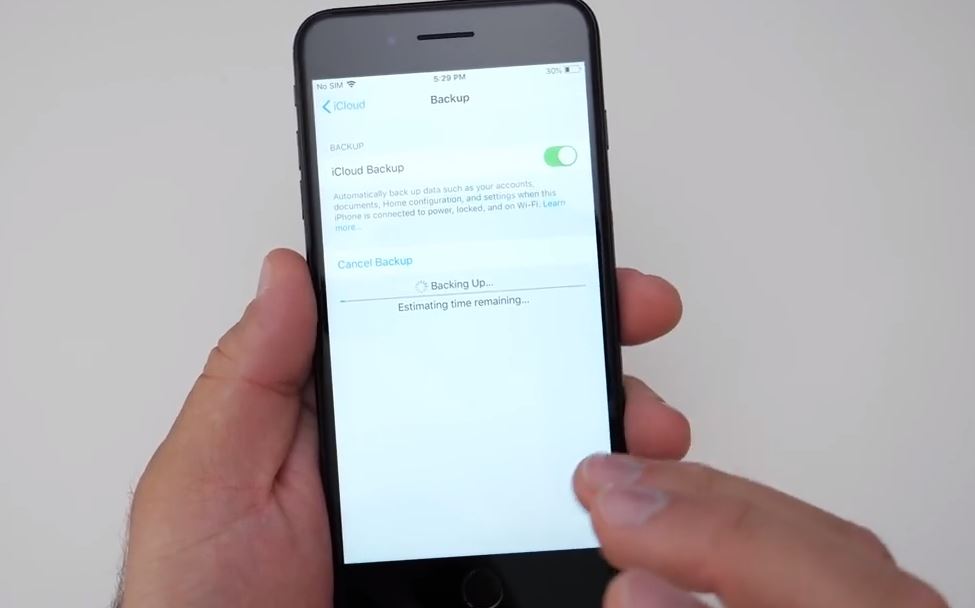
Turn on your new iPhone and follow the setup wizard
Now Turn on your new iPhone by pressing and holding (just for a second or two) the oblong on/off button at the top right of the device.
Once the device is on, swipe where it says ‘Slide to Set Up’. Apple will now take you through a number of options.
First, you’ll need to choose your language, then your country or region, connect to Wi-Fi, and enable Location Services.
Then you get the option to Restore from iCloud Backup, Restore from iTunes Backup or Set Up as New iPhone. Since you have a backup, pick the relevant option.
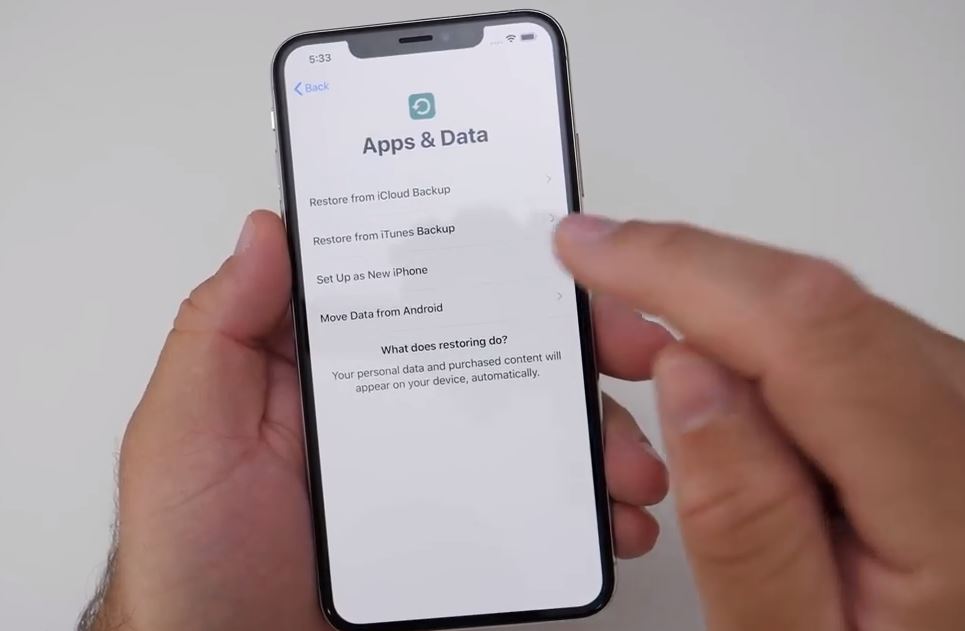
Restore from iTunes
If you backed up via iTunes, connect your iPhone to the computer that you backed up to. iTunes will ask if you want to restore from the backup or set up as new. Select Restore from this backup option.
While the restore process is taking place, the iTunes progress bar may pause – it may just need more time, so don’t unplug your phone. When the process is complete your new iPhone will start up. Keep the device connected to iTunes to sync your music and other media files.
Restore from iCloud
If your old iPhone is backed up to iCloud you don’t even need to plug your iPhone into your computer, although you will want to plug it into a power source. It also needs to be on a Wi-Fi network. In fact, it is possible to set up your new iPhone without ever plugging it into a computer.
When prompted to set up, choose Restore from iCloud Backup, tap next, and enter your Apple ID and password. Select the backup of your old device and tap Restore.
Wait until the device has finished restoring from the backup – the time this takes will depend on how much data is contained in the backup and the speed of your internet connection. When the restore process is complete, your device will restart. And you get all old iPhone data on your new device.
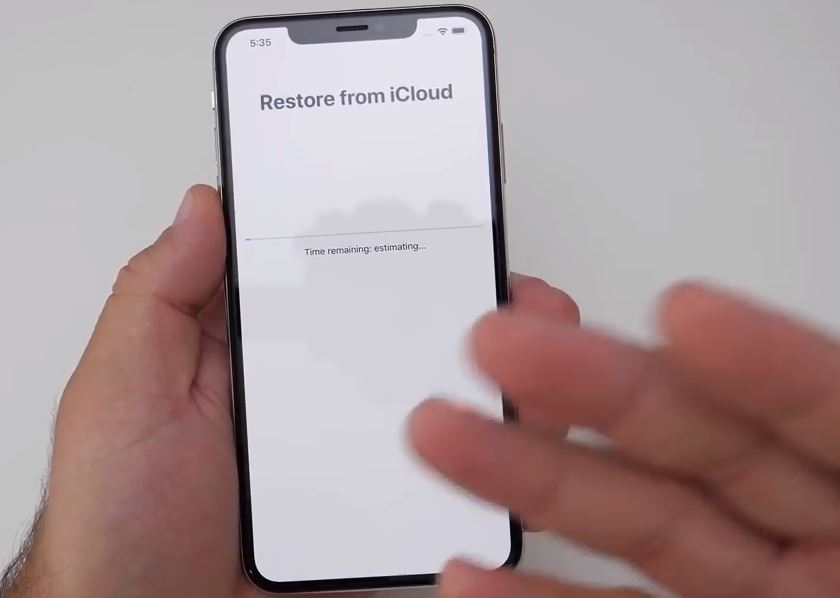
Switching from Android to a new iPhone
If you’re coming over from Android, Make sure your current Android device is fully backed up to a working email address. (Just in case! Not that we expect anything to go wrong but you never know.) You can do this by going to your Android settings and checking out Backup and sync.
- Now download the Move to iOS app from Google Play and install on your device.
- Open the Move to iOS app on your Android, click Continue and then Agree to the Terms and Conditions.
- Power on your new iPhone and begin following the prompts to set up.
- A few steps into the process you’ll arrive at a screen with the heading Apps and data. Choose the Move data from the Android option.

- Click Continue and code should appear on the screen.
- Back on your Android, click Next and enter your code.
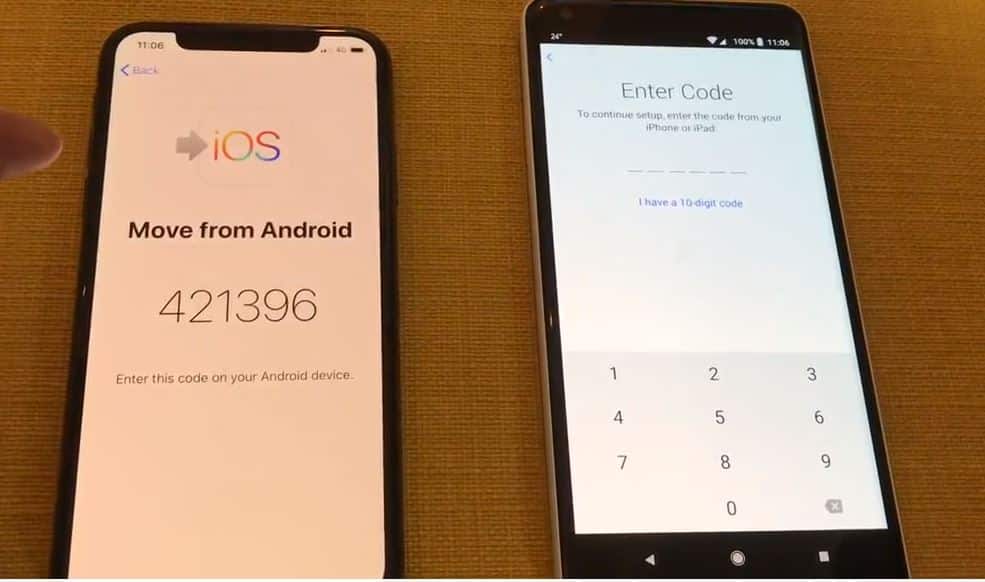
- Once your phones are ready to make the transfer, your Android should display a screen with the heading Transfer Data. The screen will list all of the information to be transferred. Check that all the content you want has been selected (or not if you don’t want it) and click Next.
- The transfer of content will now begin. This could take a few minutes. Or even more, depending on how much data you’re sending across.
- Once ready, click Done on your Android and Continue Setting Up on your iPhone.
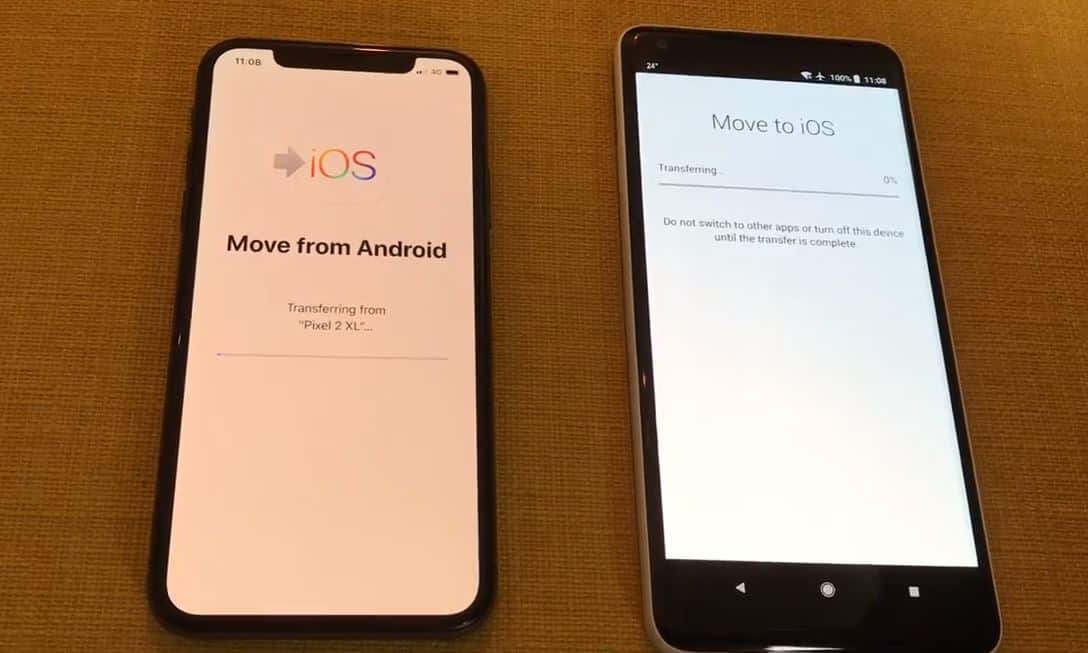
Note: You can’t transfer literally everything, but you can bring over your contacts, messages, photos and videos, calendars, and email accounts. Some free apps will make the jump as well.
That’s all, you have successfully set up your brand-new iPhone.
